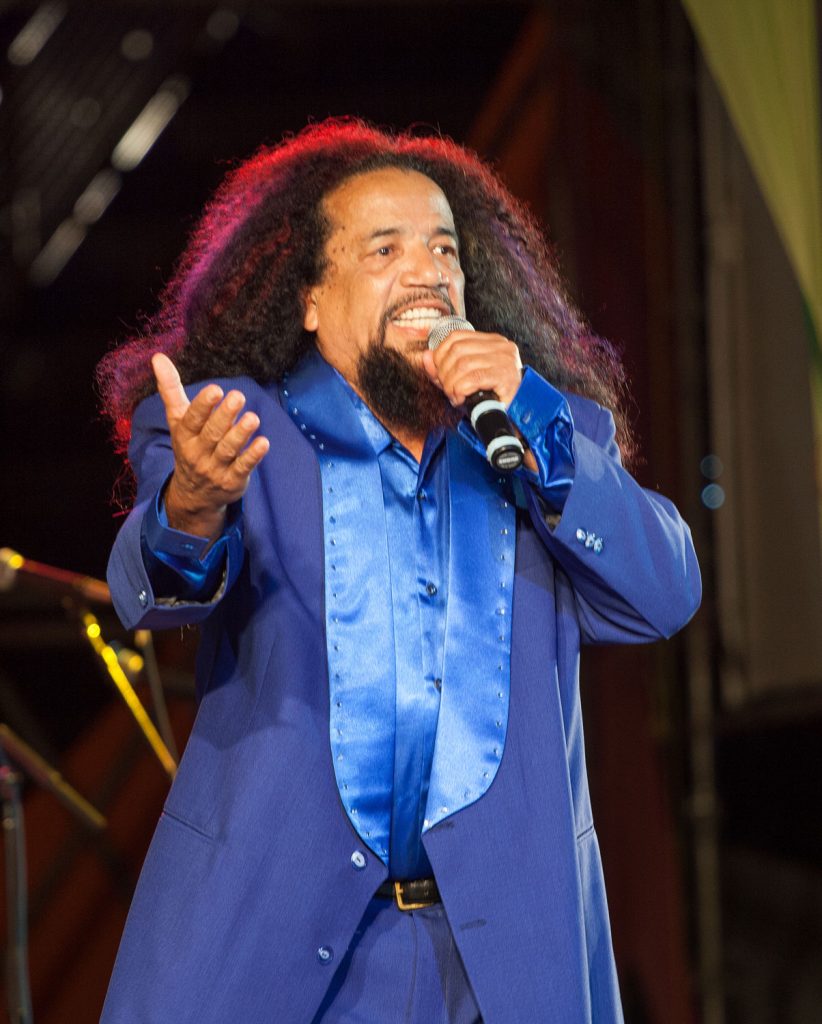There was a time when Christmas in Trinidad & Tobago, like much of the Caribbean, was musically dominated by songs that painted images of snow, mistletoe, and pumpkin pie. The voices of Bing Crosby, Frank Sinatra, Nat King Cole, and Perry Como filled the airwaves as people hustled in the hot Caribbean sun.
But T&T already had its own Christmas soundtrack in the form of parang — folk music, sung in Spanish, first brought to Trinidad by Venezuelan migrant cocoa farmers in the 18th century. Yet, despite this rich cultural heritage, classics like “White Christmas” and “There’s No Place Like Home for the Holidays” remained Christmas staples.
As T&T gained independence in 1962, the country searched for a new national identity, much like an infant finding its footing. Socioeconomic tensions arose in this postcolonial period of uncertainty, culminating in the Black Power Uprising of 1970.
This inspired a shift away from musical imports. Homegrown Christmas songs like Lennox Gray’s “Around my Christmas Tree”, Nap Hepburn’s “Listen Mama”, and Chalkdust’s “Something Salt” captured the essence of a truly Trinidadian Christmas, and resonated deeply with the people.
Then, in 1978, the Christmas music landscape changed forever when calypsonian Edwin Ayoung — known affectionately by his sobriquet Crazy, and whose mother was Venezuelan — introduced a new genre, fusing parang and soca.
It all started when a friend and songwriter, Clibert Harewood, handed Crazy a piece of paper with the opening lyrics, “I took the role of a lead singer”. Crazy, inspired by the words, began strumming his cuatro and, with the encouragement of friends, recorded the song in New York with Vincentian producer Frankie McIntosh.
The song told the story of how audiences reacted to his Carnival style version of parang:
I took the role of lead singer, Parangrama in Arima
Fans heard of my parang band, so thousands flock the grand stand
Dave Elcock was the MC when he introduced me
People jumping like Carnival to my rendition of serenal
Alagata alpagata, uno rum, uno paratha
Maria, Maria, Maria, mi corazón
From Port of Spain to Fyzabad, everybody know Crazy mad
Maria, Maria, Maria, mi corazón
In 1981, Singing Francine made history by releasing the first full-length soca parang album, Christmas is Love
The song — which everyone still refers to as “Maria” — is really titled “Parang Soca”, and marked the first time the term “parang soca” was introduced into T&T’s musical lexicon. Crazy had groundbreakingly fused traditional parang’s musical instrumentation — cuatro, guitar, shak shak — with calypso and soca rhythms (with soca itself only having emerged in the early 70s), while blending English, some Spanish … and some nonsense lyrics.
While the parang community initially disapproved of what they saw as the commercialisation of their folk tradition — calling it “Christmas calypso” — the song took off. So popular was “Parang Soca” that five steelbands played it at Panorama the following Carnival, Crazy revealed.
Realising he was onto something, Crazy followed up with another hit in 1979 called “Muchacha”. To date, he has produced over 60 soca parang songs. (There’s also an ongoing debate in some quarters about distinctions between “parang soca” and “soca parang”…)
In 1979, calypsonian Singing Francine, now deceased, became one of the leading voices of the genre with her song “Hurray Hurrah”, which heralded the birth of Christ — similar to the nascimientos that parranderos sang in honour of the Holy birth:
For unto us a child was born
For unto us an ever-loving son
Like a thief in the night
He shone His light
For He meant no harm
He came to save us from damnation
Hurray, hurray, hurrah!
Hurrah, hurrah! they say
Our Saviour is born today!
In swaddling clothes He lie
While the shepherds cry
For they just couldn’t believe dey eyes
And when He come a man
You know dem non-Christians
Get together and pound nails in He hand
But on the third day, He rose again
So you see, He shed His blood for we.
In 1981, Singing Francine made history by releasing the first full-length soca parang album, Christmas is Love, which included popular tracks like “Ay Ay Maria” and “Foolish Man”. She would go on to produce other soca parang albums and pave the way for other women in the genre, such as Marcia Miranda (“Bring Out De Ham”, “Gimme Love”) and Susan Maicoo (“Trini Christmas is the Best”, “Where Daisy Gone”).
The doors now wide open, other calypsonians jumped on the soca parang bandwagon. Icons like Lord Kitchener, Relator, Swallow, Penguin, and Bill Trotman all contributed to the genre’s growing popularity.
As the 1980s came to a close, Irwin Reyes Johnson — a former Calypso Monarch in Trinidad, known by his sobriquet Scrunter — entered the scene with the unforgettable hit “Piece ah Pork” in 1988.
Drawing from his childhood in Sangre Grande, where Christmas meant sharing food and looking out for neighbours, Scrunter’s storytelling captured the hearts of many. Subsequent releases like “Leroy”, “Anita”, “Ma Jeffrey”, and “Tribute to Daisy” became instant classics, cementing his place in the soca parang pantheon.
The genre, which began in the 1970s and blossomed in the 1980s, continues to thrive today. Artists such as Crazy, Scrunter, and Baron — another calypsonian who has written his name into the soca parang history books with songs like “It’s Christmas”, “Spanish Woman”, and “Come Go” — earn more of their living off soca parang than calypso, performing at Christmas events locally, regionally, and internationally.
While a new generation of artists — such as Jerome “Rome” Priscilla and Rembunction — carries the torch for soca parang today, the older songs continue to resonate with a multi-generational audience.
Much like Mariah Carey’s annual resurgence in the United States with her timeless hit “All I Want for Christmas is You”, Trinidad & Tobago’s soca parang songs feel fresh and new every year, as they rekindle the festive spirit across the islands.

